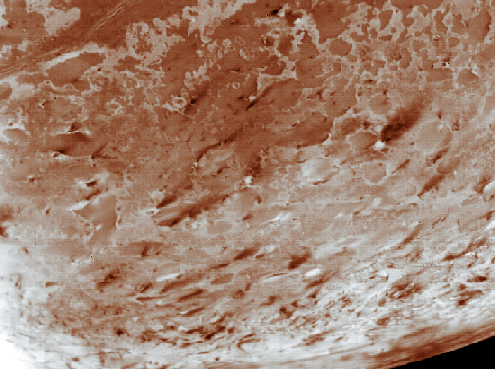 |
Астронет: Астрономическая картинка дня Гейзеры на Тритоне http://variable-stars.ru/db/msg/1162017/eng |
Credit & Copyright: NASA, Voyager Project,
Copyright Calvin J. Hamilton
Explanation:
In August of 1989 NASA's
Voyager 2
spacecraft passed by Neptune, the most distant of the solar system's gas
giant planets. Its encounter with Neptune climaxed with its closest approach
to Neptune's largest moon Triton. From a distance of about 24,000 miles
the robot space probe surveyed Triton's surface, whose temperature
averages nearly -400 degrees Fahrenheit, and discovered surprising evidence
of a complex and active world.
For example, the prominent dark streaks in this image seem to come from
small volcanoes and may
consist of nitrogen frost mixed with organic compounds ejected during
geyser-like eruptions.
For more information about Triton, see Calvin J. Hamilton's Triton page .
Authors & editors:
Robert Nemiroff
(MTU) &
Jerry Bonnell
(USRA)
NASA Web Site Statements, Warnings,
and Disclaimers
NASA Official: Jay Norris.
Specific
rights apply.
A service of:
LHEA at
NASA /
GSFC
& Michigan Tech. U.
